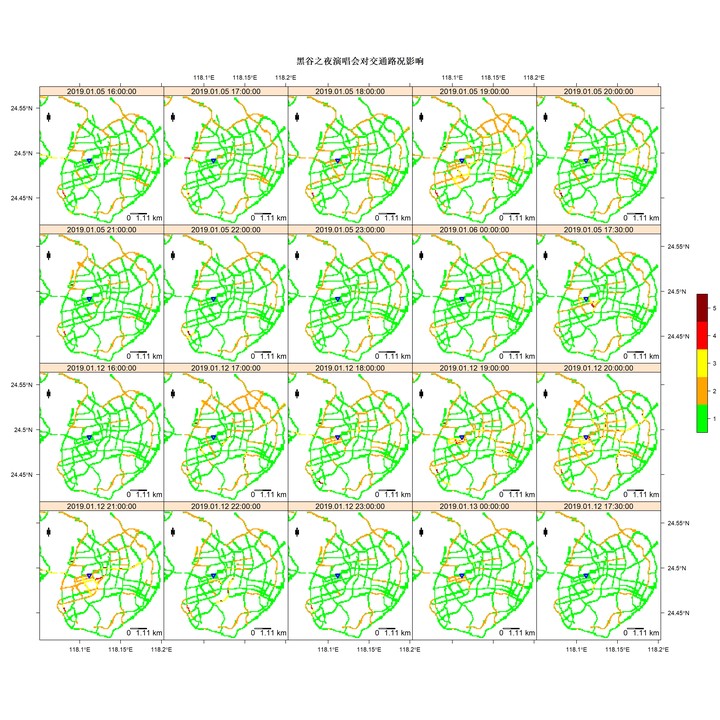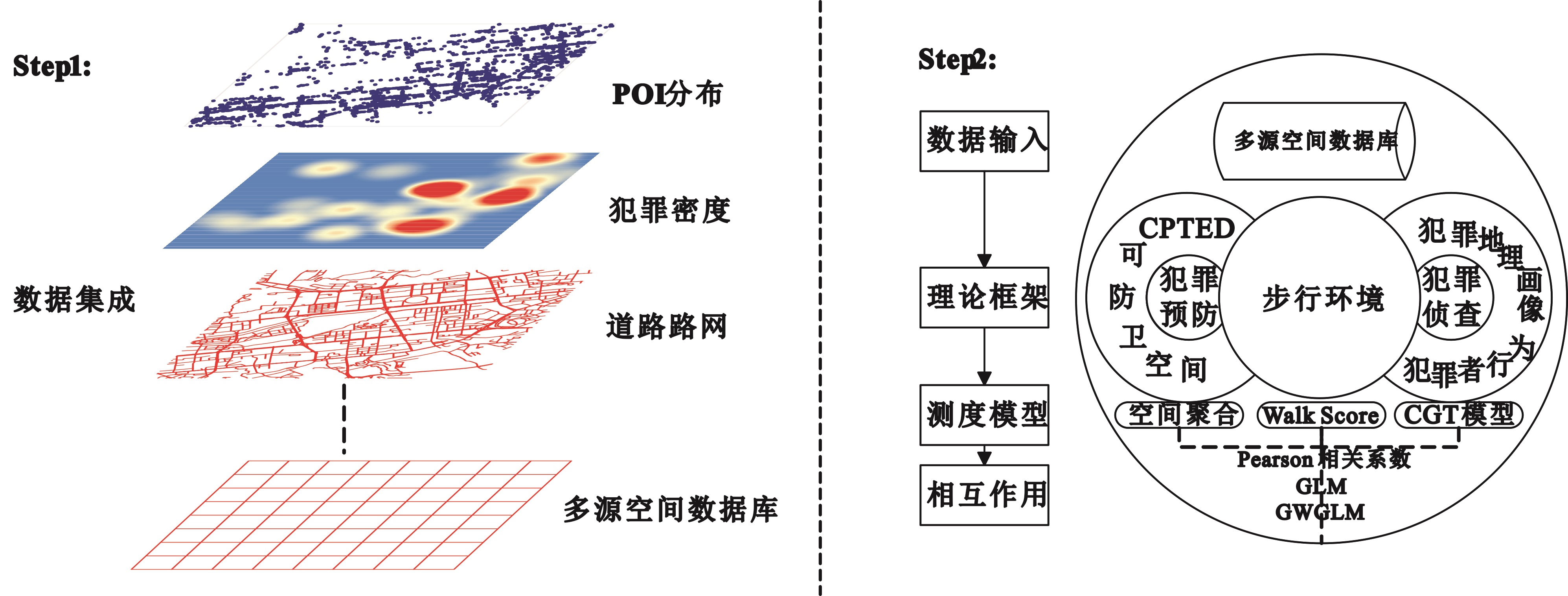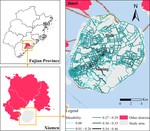Spatial-Temporal GIS Theory

Spatial-temporal data is the key to handling big data in this era. Therefore, we need to explored and improved the spatial-temporal GIS theory. On the other hand, we could used the big data to study the traditional spatial-temporal GIS theory and its applicathions such as spatial-temporal human behaviour, criminal geographical theory. Furthermore, scale effect and the modified areal unit problem(MAUP) are also the unsolved problems in geographical study. We want to improve the spatial-temporal geographical theory and its applicathions.
1 Application of spatial statistical theory in crime geography

Figure 1. Analytic framework
The results showed that the walking environment probably has a positive effect on the RST crime in H city, the greater walkability, the more RST. The effects of walking environment probably has spatial heterogeneity features both on RST and the residence probability of suspects.
2 Development of spatiotemporal mapping of urban elements
High-resolution mapping of steel resources accumulated above ground (referred to as steel stocks) is critical for exploring urban mining and circular economy opportunities. We developed an aggregative downscaling model that fuses multiple large-scale spatial datasets, including gridded population, gross domestic product (GDP), and built-up area. We demonstrated the utility of this model by using it to map steel stocks in mainland China at 1 × 1 km resolution. Our results found the steel stocks increased from 12,873 $t/km^2$ to 33,027 $t/km^2$ during 1995–2015, and four steel stocks clusters (i.e., Beijing-Tianjin-Hebei agglomeration, Yangtze River Delta, Guangdong-Hong Kong-Macao Greater Bay Area, and Chengdu-Chongqing metropolitan) possessed over 40% of the national total in 2015, revealing an unbalanced distribution of steel stocks across China.

Figure 2. National coverage of in-use steel stocks in 2015 at 1 × 1 km grid level and an example (in a partial view) of modelling area (a), and stocks changes during 1995–2015 (b)
3 Development of spatiotemporal physical activity opportunity using multi-source geospatial big data and machine learning
We develop a bikeability evaluation framework by combining the collected multi-source spatio-temporal big data.

Figure 3. The proposed bikeability framework.

Figure 4. Average bikeability of Xiamen Island on December 21st, 22nd, 23rd, 24th, 25th, 2020, the roads highlighted in red indicate lower levels of bikeability, whereas those in green indicate higher levels of bikeability.

Figure 5. Average bikeability of Xiamen Island at 6:00, 7:00, 8:00, and 9:00 a.m., the roads highlighted in red indicate lower levels of bikeability, whereas those in green indicate higher levels of bikeability.



